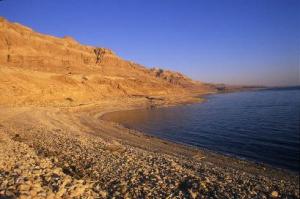
The proposed Red-Dead Conduit will link the Red Sea to the Dead Sea. The project aims to pump water from the Gulf of Aqaba to the Dead Sea. This transmission of vast quantities of water would then be utilized to generate electricity, desalinate water and pump it to populous areas, and deposit the rest of the water into the Dead Sea in order to counteract its demise. This complex project would cost an estimated US $5 billion and would take 20 years to complete.
Even though this projects has many benefits such as slowing the Dead Sea’s decline and increasing Jordanian, Palestinian and Israeli energy security, it would have a major impact on the region and drastic consequences on the natural habitats that the canal traverses. Brines created from the process of desalinating Red Sea’s water would have new chemical composition that would damage the unique natural ecosystem of the Dead Sea. . Possible damage includes changes in water salinity, massive formation of gypsum, formation of volatile toxic compounds, change in water evaporation rates, changes in the composition of bacteria and algae which inhabit the sea surface, chemical changes in the rocks which surround the water, and the loss of the unique health benefits that account for much of the tourist attraction to the Dead Sea area.

Furthermore, the unique coral reefs at the Gulf of Aqaba would be damaged due to water pumping. In addition, the natural landscape of the Arabah (the desert valley that separates the two seas) would be harmed due to the construction as well as the increase in humidity caused by open canal segments. The aquifer of the Arabah may also be damaged due to contamination of groundwater with saline water from the Red Sea. The alluvial deposits in Wadi Arabah contain important supplies of fresh water; in the event that the pipeline ruptures (as might happen in the case of an earthquake), these aquifers will be permanently damaged. This can bear fatal consequences to both the agriculture and ecosystem of the Arabah. Moreover, the project poses a threat to important archeological heritage, as it will cross areas such as Wadi Finan, where the earliest copper mining and extraction in the world took place.
The environment must be our number one priority; we have to try our best to preserve it. The Red Dead Canal is too risky to be a solution to the Dead Sea’s demise. The only eco-friendly way to stop the shrinking of the Dead Sea is to rehabilitate the Lower Jordan River.
This post was written by FoEME student intern Khaled Al Sharif. Khaled is 15 years old, and currently attends the New English School in Amman.